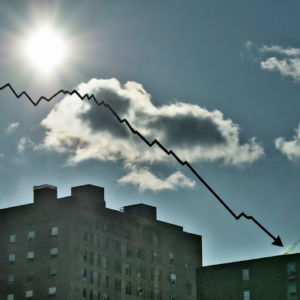In the multifamily sector, we’ve witnessed significant shifts in occupancy trends. After a remarkable rise between March and November of 2021, the national multifamily average occupancy has been on a nearly two-year decline, erasing the gains from 2021.
Rental market trends have shifted. After a big jump in occupancy from March to November 2021, vacancy rates in apartment buildings nationwide have been steadily climbing for almost two years, wiping out those earlier gains.
Here's the breakdown:
- More supply than demand: Lots of new apartments have been built (over 300,000 last year alone!), but not enough renters are moving in to fill them all. Even so, it wasn’t until the last quarter of 2023 that vacancy rates reached pre-pandemic levels.
- What’s next? If things keep going this way, the average vacancy rate across the country could drop below 90% in the coming months. This is because there are still a lot of new apartments being built, while demand for rentals isn’t keeping up.

Supply vs. Demand: New units delivered have outpaced net absorbed units, with over 300,000 new units added last year. Despite this, it took until Q4 for national average occupancy to return to 2019 levels.
Future Projections: With the current trajectory, the industry is poised to see the national average occupancy dip below 90% in the coming months. The combination of a robust new construction pipeline and subdued apartment demand presents challenges.
The Silver Lining: Despite the challenges, opportunities remain. As the industry navigates these waters, focusing on operational excellence and strategic management will be crucial.
The good news? There are still opportunities. By focusing on how they operate and making smart decisions, apartment building owners can navigate these challenges.
Want to learn more? Check out other article for a deeper dive into these trends “Houston Multifamily Market Thrives In 2023, Poised For Further Growth“.
#MultifamilyRealEstate #OccupancyTrends #RealEstateInsights



